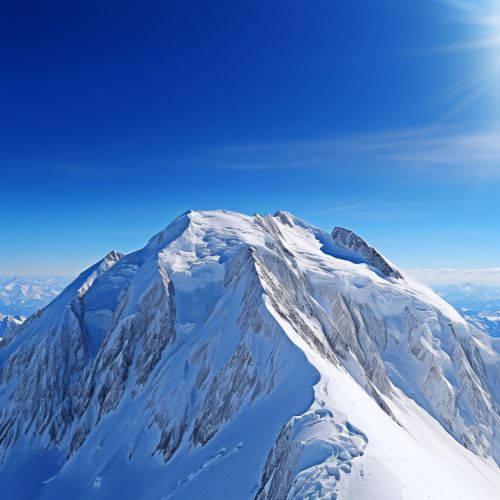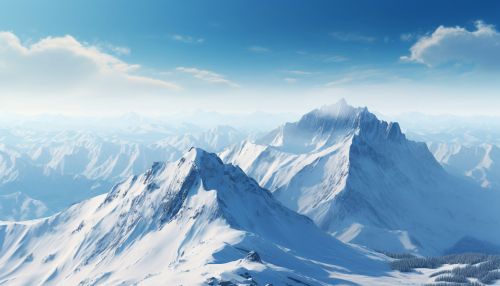Mont Blanc
Geography
Mont Blanc, or Monte Bianco as it is known in Italian, is the highest mountain in the Alps and the highest in Europe west of the Caucasus peaks of Russia and Georgia. It rises 4,808.7 m (15,777 ft) above sea level and is ranked 11th in the world in topographic prominence. The mountain stands in a range called the Graian Alps, between the regions of Aosta Valley, Italy, and Savoie and Haute-Savoie, France. The location of the summit is on the watershed line between the valleys of Ferret and Veny in Italy and the valleys of Montjoie, and Arve in France, on the border between the two countries.


Geology
The Mont Blanc massif is a compact group of mountains that consists of granite. The granite intrusions were formed during the Variscan orogeny in the late Paleozoic era, around 300 to 400 million years ago. The massif was then uplifted during the Alpine orogeny, a mountain-building event that took place around 100 million years ago. The erosion of the massif caused by glaciers during the Quaternary period led to its current shape.
Climbing History
The first recorded ascent of Mont Blanc was on 8 August 1786 by Jacques Balmat and the doctor Michel Paccard. This climb, initiated by Horace-Bénédict de Saussure, who gave a reward for the successful ascent, traditionally marks the start of modern mountaineering. The first woman to reach the summit was Marie Paradis in 1808. Nowadays, the ascent of Mont Blanc is a popular climbing route for mountaineers from around the world, and it is estimated that around 20,000 mountaineer-tourists ascend the mountain per year.
Climate and Ecology
The climate of Mont Blanc is a type of mountain climate with a high level of precipitation. The temperature decreases with altitude, but the sun radiation increases, thus the slopes of the Mont Blanc massif are often subject to severe weather conditions. The flora and fauna of the mountain are typical of the alpine region. The lower slopes of the mountain are home to deciduous and mixed forests and alpine pastures. The higher regions are characterized by alpine grasslands, rock and ice.
Cultural Significance
Mont Blanc has been admired for its beauty and feared for its danger for centuries. It has inspired poets, writers, and artists, and has been the site of numerous aircraft crashes and mountaineering accidents. Despite its dangers, it continues to be a popular tourist destination and an important symbol of natural heritage for the European countries in which it is located.
